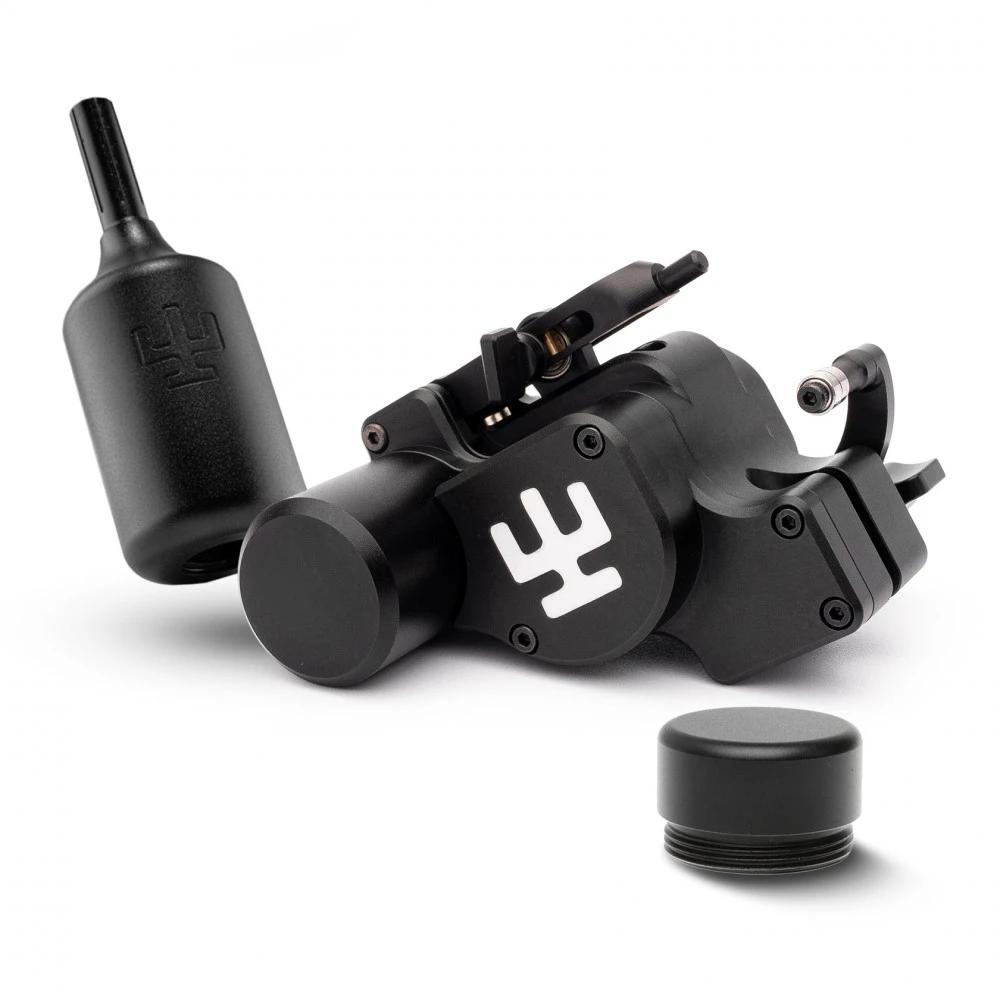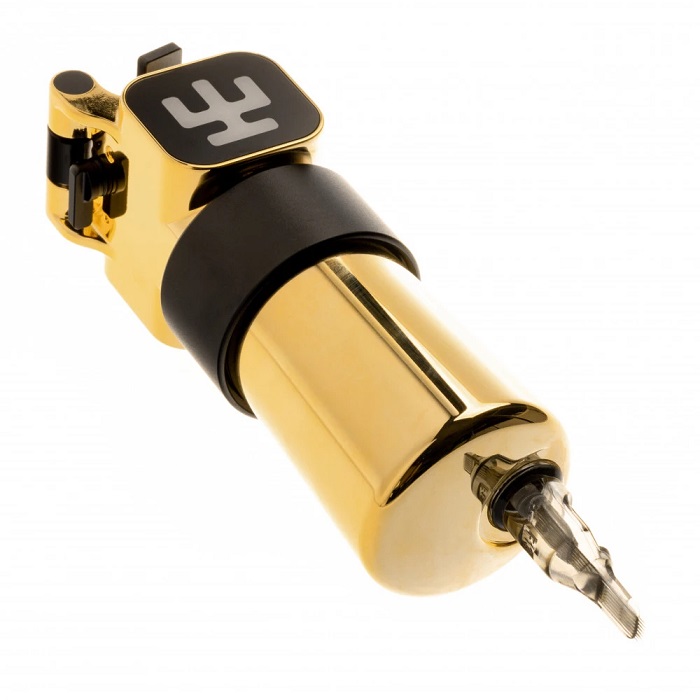Tattooing in 2025 rewards artists who pair clean technique with smart equipment. If you want steadier lines, less fatigue, and results that heal beautifully, start with tools that maximize control and repeatability. For many artists, that means exploring pro tattoo machines that deliver low vibration, predictable stroke, and an ergonomic grip you can trust through long sessions.
If you’re launching your first setup—or upgrading with minimal guesswork—consider streamlined tattoo machine kits. A well-matched kit removes compatibility headaches, so you can focus on line weight, saturation, and client comfort instead of wiring and adapters. This guide shows exactly how to choose by style, session length, and budget—so beginners start strong and working pros dial in consistent, pro-level results all year long.
Who this guide serves
Two groups will get the most from this guide: artists building their first reliable setup and professionals who want more consistency with less fatigue. If you’re learning depth control and angle, you need forgiving ergonomics and a machine that responds predictably. If your schedule is already full, you need repeatable results across styles, rock-solid power delivery, and a setup that stays comfortable in multi-hour sessions.
Fast picks by goal
- Fine line & single needle: Shorter stroke (≈2.5–3.0 mm), crisp power delivery, pen-style grip for natural micro-adjustments.
- Black & gray: Medium stroke with a smooth, forgiving give to build gradients without trauma; comfortable grip diameter for slow shading motions.
- Color packing & saturation: Slightly longer stroke (≈3.5–4.0 mm) with steady torque for larger groupings; stable voltage to prevent “wobble.”
- Long sessions: Prioritize balance, grip diameter (often 32–38 mm), and low vibration. Small ergonomic wins compound over four hours.
Use this as a map: match stroke and torque to the job, then tune ergonomics to your hand size and working posture.
Types in 2025: what to choose and why
Pen/rotary — ergonomics, control, versatility
Pen-style rotary machines dominate for a reason: they feel intuitive, keep vibration low, and pair smoothly with modern cartridge needles. For beginners, that shortens the learning curve. For pros, it means consistent hand-to-skin feedback and easy switching between lining, shading, and packing with small changes to stroke or voltage. If you switch styles in the same day, the pen format keeps your muscle memory stable.
Coil — tactile feedback and punch
Coils offer a mechanical, tactile hit that some artists prefer for specific styles. The trade-offs: more noise, more maintenance, and a steeper learning curve. If you already love the feel, it’s a powerful choice. If not, a quality rotary generally delivers faster, more consistent results with fewer variables to manage.
Wireless — freedom vs. weight management
Wireless setups kill cord drag and unclutter your station. The downside is battery weight and balance. Modern packs regulate power far better than before, but you should still test how the center of mass feels over time. Reliable regulation is non-negotiable—cheap packs drift under load, which shows up as inconsistent linework.

Specifications that change your lines
Stroke length. The distance the needle travels shapes ink deposition and feel. Shorter strokes excel at delicate lines; longer strokes push bigger groupings and color more efficiently. Many machines offer swappable cams or adjustable stroke—use them.
Torque and consistency. Look for a motor that doesn’t stall when you meet resistance or switch to a larger needle. Consistent torque under load keeps your line uniform—more important than flashy top-speed numbers.
Voltage stability. Real-world results depend on a steady power curve, not just the number on your supply. Unstable voltage creates micro-hesitations that read as shaky lines and force you to slow down.
Grip diameter and weight. The right diameter reduces pinch force and keeps the wrist relaxed. Oversized grips can help in long sessions, but too large dulls your finesse. Choose a weight and balance that let your hand float.
Needle systems & hygiene. Quality cartridges with reliable membranes protect both machine and client. Pair them with proper sleeves and barriers; clean workflow, clean result.
First setup vs. pro upgrades
First setup. Start with a versatile, forgiving rotary. A medium stroke with solid power delivery makes lines easier, shading smoother, and small mags manageable. Add a reliable power supply (or well-regulated battery) and a focused set of cartridges you’ll actually practice with.
Pro upgrades. Once your core technique is locked, specialize. Keep a second machine tuned for your most common task (e.g., a longer stroke for packing or a softer setup for black & gray). Upgrade grips to match session length and hand size. If you go wireless, keep spare batteries ready so regulation—and your line quality—never dips.
Kits vs. custom build
Kits shine when you want speed and compatibility out of the box. They remove guesswork and let you put attention where it belongs: needle choice, depth, and stretch. A custom build gives surgical control—best if you already know exactly how you like stroke, torque, and balance to feel. A smart path for many artists is to start with a kit to reduce friction, then swap components as preferences become clear.
Budget and ROI in 2025
Clients don’t reward you for saving on gear—they reward consistent results that heal well and bring them back. A machine that improves line uniformity and reduces trauma shortens sessions, raises healed quality, and increases referrals. That’s ROI. Bargain tools with inconsistent output usually lead to double-spending: you replace them once your calendar fills and the shortcomings become obvious. Buy intentionally; let precision pay you back.
Common mistakes to avoid
- Oversized grips. They feel stable—until they slow micro-adjustments and tire your hand. Choose the smallest diameter that still relaxes your pinch.
- Mismatched stroke. Don’t force a short stroke through a big mag pass; don’t outline tiny script with a long, punchy stroke.
- Unstable power. Inconsistent voltage shows first in your lines and later in healing. Solve it at the source.
- Hygiene shortcuts. Barriers, sleeves, and membranes are part of image quality and client safety—every time.
Quick start checklist
- Set stroke and voltage for the job before touching skin.
- Confirm line weight and saturation on synthetic pads.
- Match grip diameter to session length and your hand.
- Prep two or three cartridge configurations you trust.
- Sleeve, barrier, and wrap everything.
- Keep backup power (or a charged spare battery) within reach.
FAQ
Pen or coil for a first machine?
A quality rotary pen is typically quieter, more versatile, and easier to learn. You’ll line, shade, and pack with minimal re-tuning.
What stroke for fine lines vs. color packing?
Fine lines feel best around 2.5–3.0 mm with crisp control; heavy packing benefits from 3.5–4.0 mm and strong torque.
Which cartridges should I start with?
Choose a reputable, membrane-sealed line for safety and consistency. Start with a small liner, a medium round shader, and a compact mag; expand from there.
Wireless or wired for long sessions?
Wireless removes drag but adds weight. If you go cordless, use a pack with excellent regulation and bring fully charged spares.
Final Verdict
The right tattoo machine in 2025 doesn’t just make work easier—it makes results more consistent and clients happier. Choose stroke and torque for the style you do most, tune ergonomics to your hand, keep power stable, and protect the workflow with proper hygiene. Start with a dependable, versatile setup, then refine piece by piece. When your tools support your technique, every pass looks cleaner—and every healed piece tells the story.





